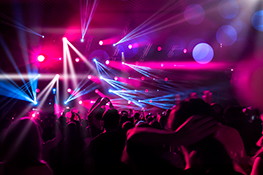Stage Lighting Setup: From Planning to Execution – A Complete Walkthrough
Planning Your Stage Lighting Design
Before a single light is hung, meticulous planning is crucial for a successful stage lighting setup. This stage involves understanding the production’s needs, the venue’s characteristics, and your budget constraints. Begin by carefully reading the script or reviewing the event plan. Identify key moments requiring specific lighting effects – a dramatic monologue, a romantic dance, a fast-paced action scene. Note the mood and atmosphere you aim to create for each scene. This detailed analysis will form the foundation of your lighting plot.
Next, survey the venue. Consider the size of the stage, the height of the ceiling, the available power outlets, and any existing rigging points. Measure distances accurately and create a scale drawing of the stage and its surroundings. This will help you visualize the placement of your lighting instruments and ensure adequate coverage. Account for potential obstructions like set pieces or audience members. Finally, set a realistic budget. Different lighting fixtures vary drastically in price, and understanding your financial limitations will guide your equipment selection.
Choosing the Right Lighting Instruments
The choice of lighting instruments significantly impacts the final look and feel of your production. Consider the following factors when making your selection:
- Intensity: How bright do your lights need to be? This depends on the size of the venue and the ambient light levels.
- Color Temperature: Choose the appropriate color temperature (measured in Kelvin) to achieve the desired mood. Cooler temperatures (5000K-6500K) are bright and crisp, while warmer temperatures (2700K-3000K) create a cozy atmosphere.
- Beam Angle: The beam angle determines the area illuminated by the light. Narrow beam angles (e.g., 10 degrees) create sharp, focused light, while wide beam angles (e.g., 60 degrees) provide broader coverage.
- Type of Fixture: Explore different types of fixtures, including Fresnels, PAR cans, LED spotlights, moving heads, and wash lights. Each has unique characteristics suitable for various applications.
Remember to factor in the need for special effects lighting such as strobes, follow spots, or automated lighting systems. These can add dynamism and excitement to your production, but they also increase the complexity and cost of your setup.
Hanging and Focusing the Lights
Once you’ve chosen your lights, it’s time to hang and focus them. Safety is paramount during this stage. Ensure you have the appropriate rigging equipment and follow all safety guidelines. Work with experienced riggers if necessary. Use your scale drawing as a guide, carefully positioning each light fixture according to your lighting plot. Consider using safety lines and ensuring all connections are secure.
Focusing involves accurately directing the light beam to its intended target. This requires patience and precision. Use the light’s focusing mechanism to adjust the beam’s shape and size. Ensure that the light is properly aimed and that there are no unwanted spill or glare.
Wiring and Power Distribution
Proper wiring and power distribution are crucial for a safe and functional lighting setup. Use heavy-duty cables and connectors capable of handling the power demands of your lighting instruments. Ensure that all connections are secure and properly grounded to prevent electrical hazards. Avoid overloading circuits and use appropriate power distribution panels. Consider using dimmers to control the intensity of your lights, providing more flexibility and creative control.
Consult a qualified electrician if you’re unsure about any aspect of the electrical work. Never compromise safety for convenience.
Testing and Refinement
Before the performance, conduct thorough testing to ensure everything functions correctly. Run through a complete lighting cue sequence, checking for any malfunctions or issues. This is your opportunity to fine-tune the lighting design, adjust focus, and make any necessary changes.
Pay close attention to the color mixing, intensity levels, and overall effect. Involve the director or event organizer in this process to ensure that the lighting meets their expectations. This final stage of refinement is essential for a polished and professional final product.
Conclusion
Setting up stage lighting effectively involves careful planning, precise execution, and a keen eye for detail. By following these steps, you can transform your stage from a simple setting into a visually stunning and impactful environment. Remember to prioritize safety throughout the entire process. With meticulous preparation and a practical approach, you can create lighting designs that enhance the overall experience and bring your productions to life.


 Auditorium Construction Services
Auditorium Construction Services 